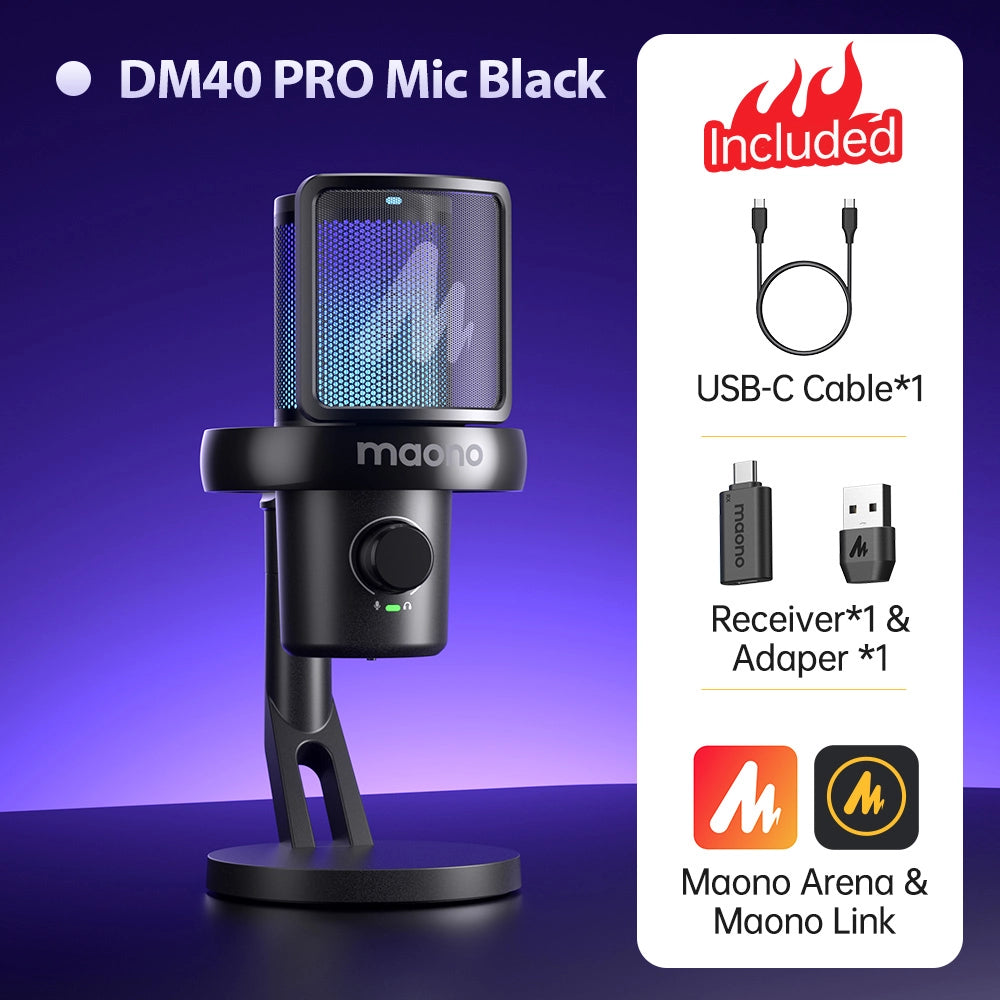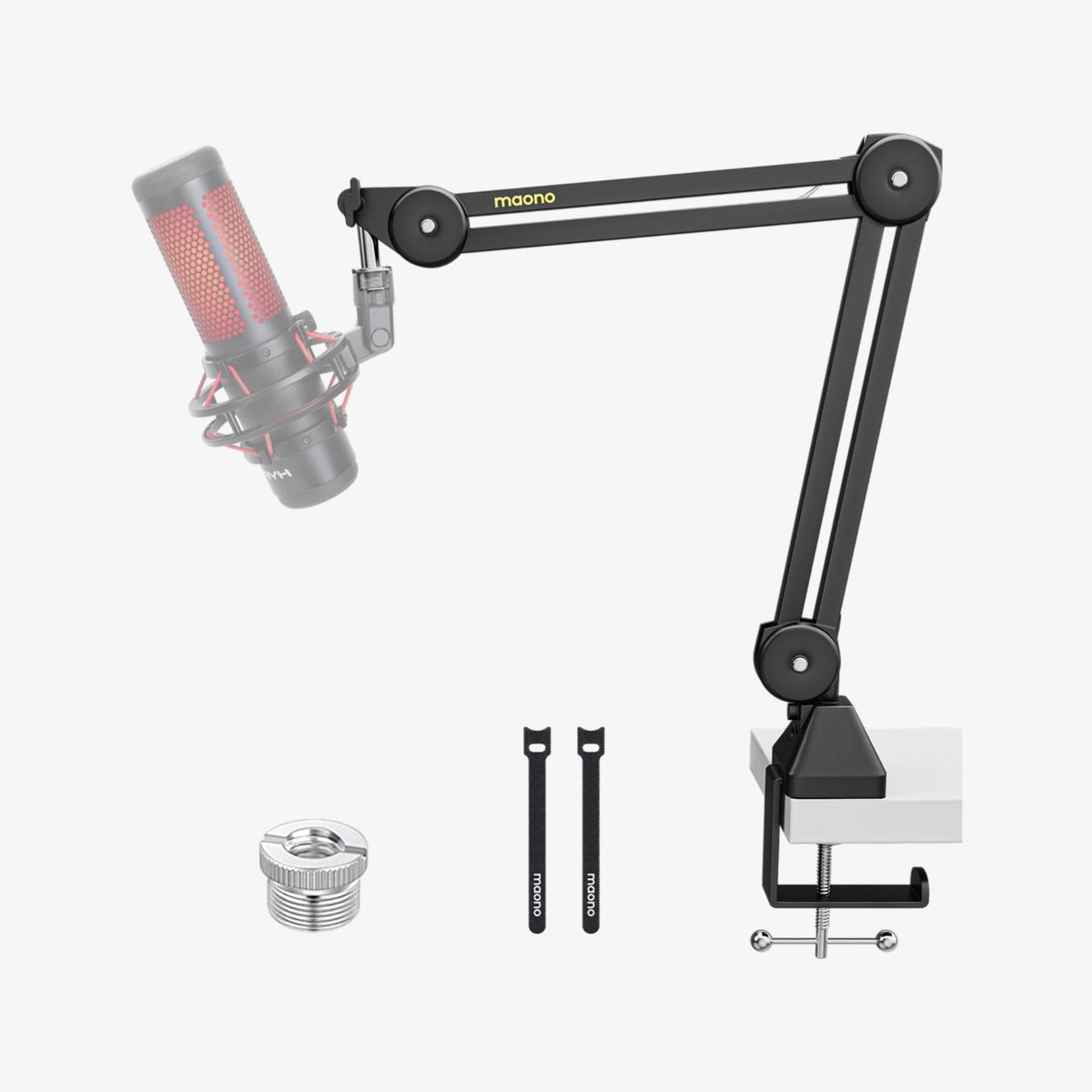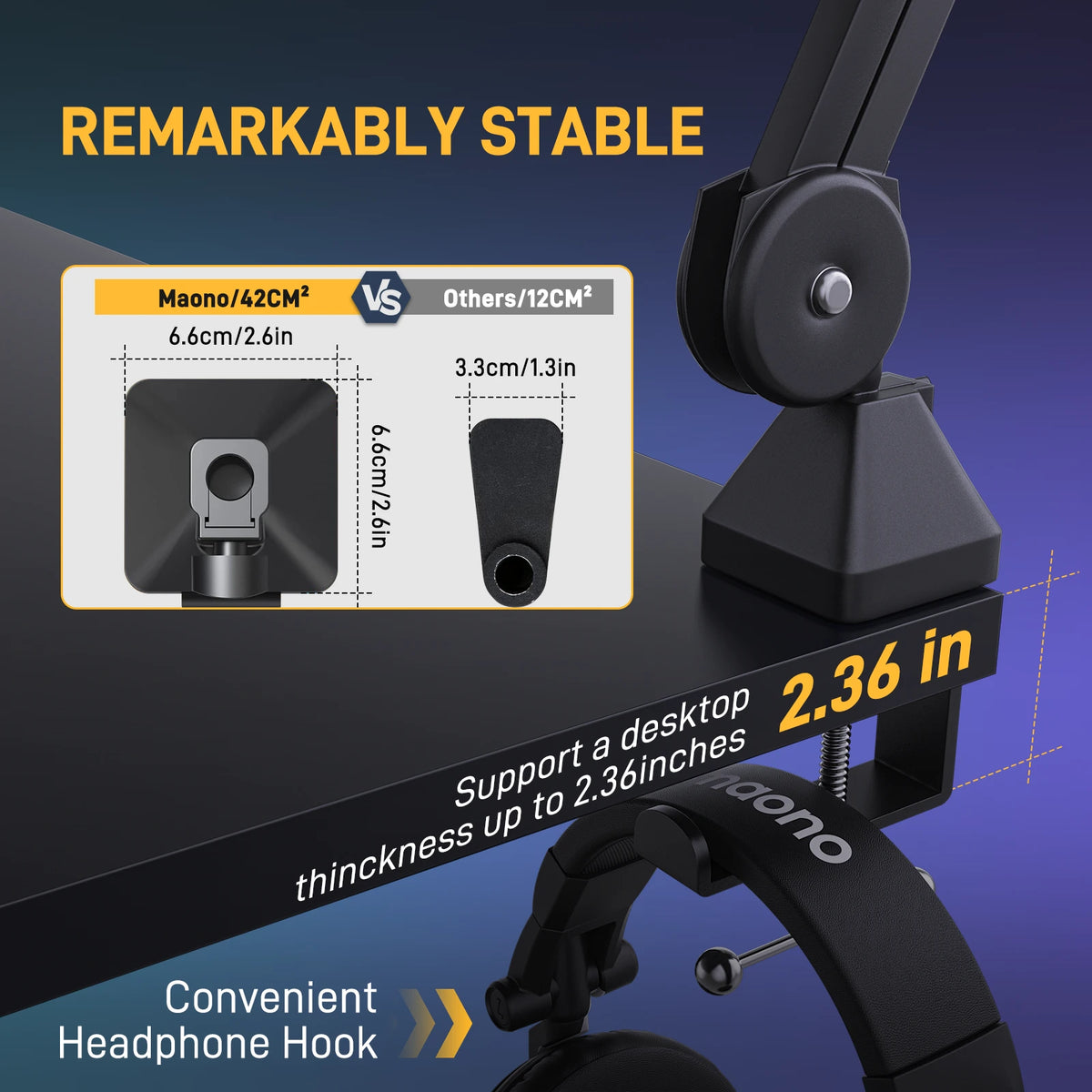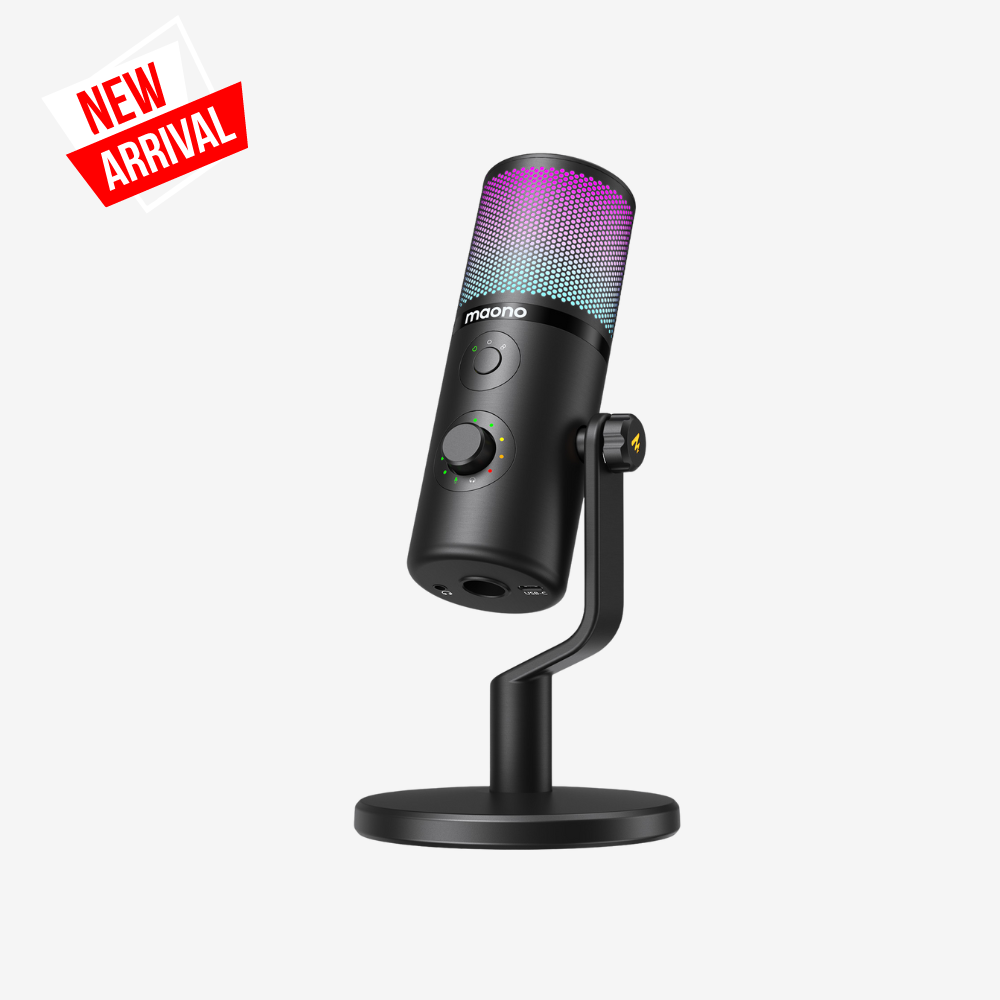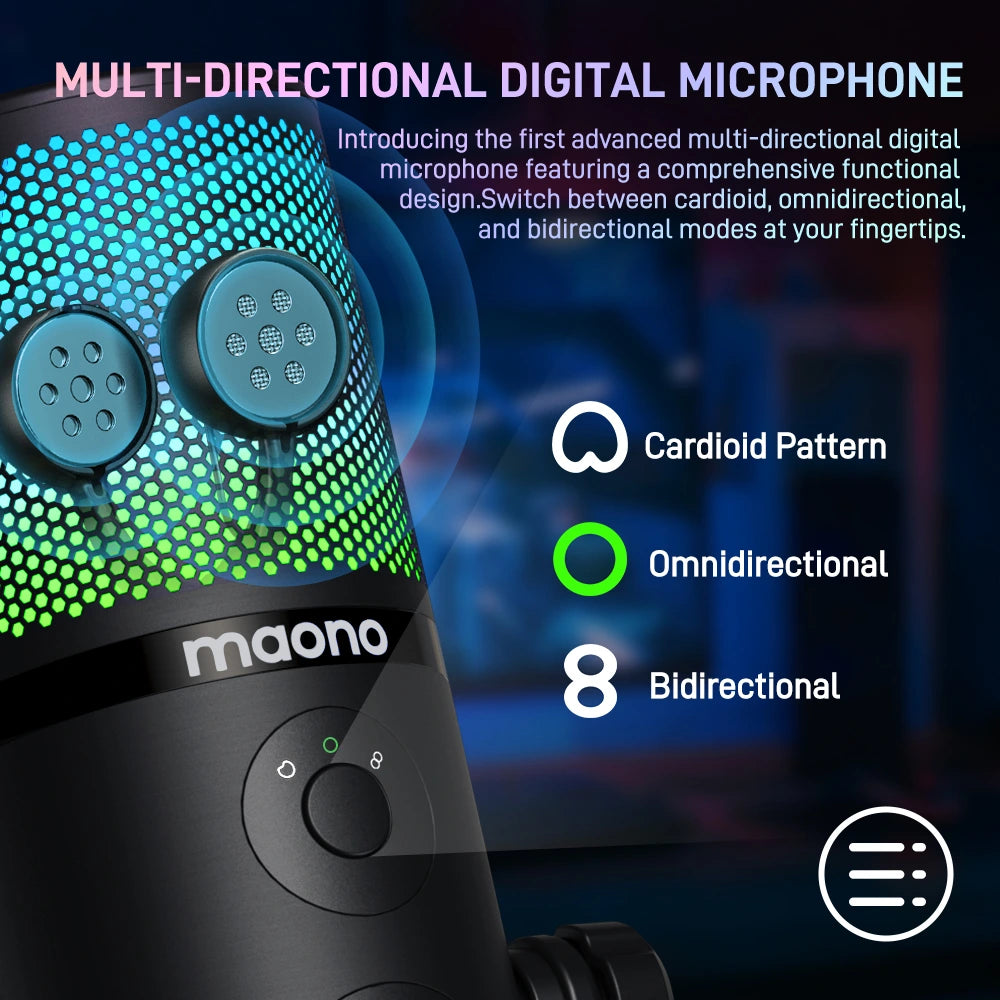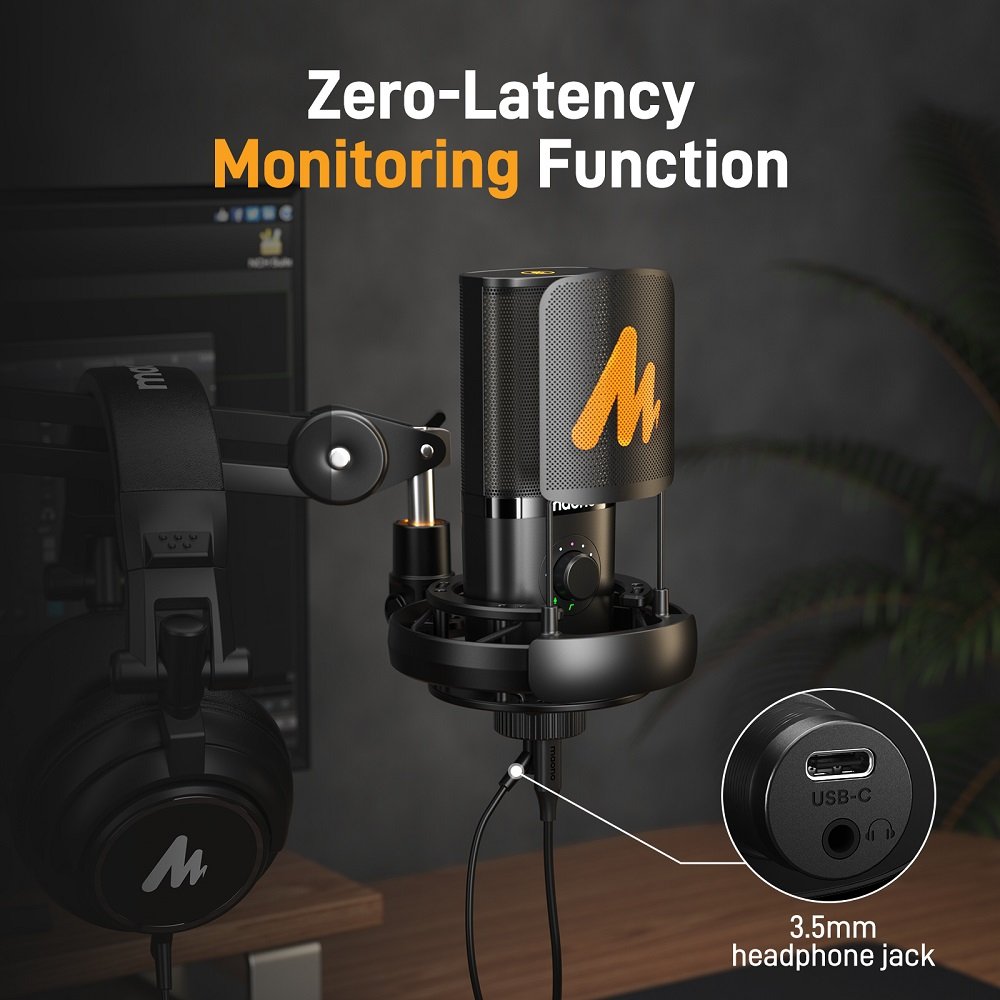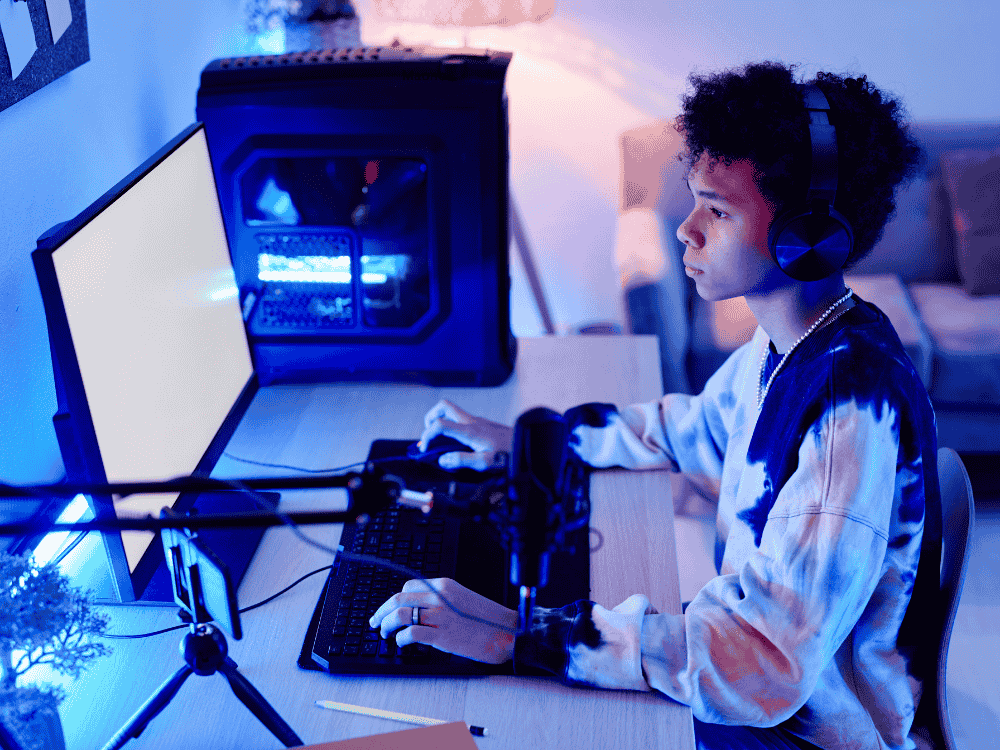Choosing a microphone can be challenging, whether it's your first time purchasing one or you're looking for a replacement. There are so many options out there that look very promising. To narrow down all the available options, we've compiled a list of 21 USB microphones that work great according to surveys and recommendations from audio equipment experts on Reddit.
If you're looking for the best USB microphone, Reddit has recommendations for you. In this article, we will explore a list of superb microphones, including their polar patterns, frequency response, notable features, specifications, reasons to buy and avoid buying, and price. Additionally, we will feature some common problems or pain points experienced by microphone users and provide solutions to these problems to help you choose the right mic for your streaming needs.
Best Budget USB Mic Reddit
The best USB microphone for streaming Reddit recommends are the following:
Dynamic Microphones:
1. Audio-Technica ATR-2100X-USB
Type: Dynamic
Frequency Response: 50 Hz - 15 kHz
Polar Pattern: Cardioid
Connectivity: USB and XLR
Pros: Versatile connectivity, durable build, good sound quality for the price.
Cons: Limited high-frequency response
Price: Around $99
Notable Features: Dual USB/XLR output, headphone jack with volume control, rugged construction
The ATR-2100X-USB is a versatile microphone ideal for live performance, podcasting, and home studio recording with both USB and XLR outputs.
2. Samson Q2U
Type: Dynamic
Frequency Response: 50 Hz - 15 kHz
Polar Pattern: Cardioid
Connectivity: USB and XLR
Pros: Dual connectivity, good sound quality, included accessories
Cons: Slightly bulky design
Price: Around $69
Notable Features: USB/XLR outputs, come with a desktop stand, windscreen, and cables
The Q2U combines the convenience of digital and analog audio capture, making it great for both live and studio applications.
3. Maono HD300T
Type: Dynamic
Frequency Response: 40 Hz - 17 kHz
Polar Pattern: Cardioid
Connectivity: USB and XLR
Pros: Affordable, good sound quality, dual connectivity
Cons: Build quality could be better
Price: Around $64.99
Notable Features: Dual USB/XLR output, plug-and-play setup
The HD300T is a budget-friendly microphone with versatile connectivity options, suitable for various recording needs.

4. Rode PodMic USB
Type: Dynamic
Frequency Response: 20 Hz - 20 kHz
Polar Pattern: Cardioid
Connectivity: USB and XLR
Pros: Excellent build quality, rich sound, versatile connectivity
Cons: Heavier than most mics
Price: Around $199
Notable Features: Dual USB/XLR output, internal pop filter, robust construction
The PodMic USB is designed for podcasting and broadcasting, delivering professional-grade audio with versatile connectivity options.
5. Samson Q9U
Frequency Response: 50 Hz - 15 kHz
Polar Pattern: Cardioid
Connectivity: USB and XLR
Pros: Great sound quality, versatile connectivity, built-in shock mount
Cons: Higher price point
Price: Around $199
Notable Features: Dual USB/XLR output, zero-latency monitoring, mid/low-frequency EQ switches
The Q9U is a high-quality microphone for podcasting, broadcasting, and recording, offering both digital and analog outputs with advanced features.
6. Rode XDM-100
Type: Dynamic
Frequency Response: 50 Hz - 15 kHz
Polar Pattern: Cardioid
Connectivity: USB-C
Pros: High-quality sound, modern connectivity, durability
Cons: USB-only connectivity limits use cases
Price: Around $199
Notable Features: USB-C output, built-in DSP, high-pass filter
The XDM-100 is a dynamic USB microphone offering premium audio quality and advanced digital signal processing for a variety of recording applications.
7. Audio-Technica ATR-2100X-USB
Frequency Response: 50 Hz - 15 kHz
Polar Pattern: Cardioid
Connectivity: USB and XLR
Pros: Dual connectivity, solid build, affordable.
Cons: Limited high-end frequency response.
Price: Around $99
Notable Features: Dual USB/XLR output, headphone jack with volume
A versatile microphone ideal for a range of recording needs with both USB and XLR outputs for flexibility.
8. Shure SM58
Type: Dynamic
Frequency Response: 50 Hz - 15 kHz
Polar Pattern: Cardioid
Connectivity: XLR
Pros: Legendary durability, excellent vocal clarity, affordable
Cons: No USB connectivity
Price: Around $99
Notable Features: Pneumatic shock mount, steel mesh grille
The SM58 is a classic and reliable microphone known for its durability and clear vocal reproduction, making it a staple for live performances.
9. Fifine K658
Type: Dynamic
Frequency Response: 70 Hz - 15 kHz
Polar Pattern: Cardioid
Connectivity: USB
Pros: Affordable, easy to use, good sound quality
Cons: Limited frequency response, USB-only
Price: Around $75
Notable Features: USB output, plug and play, simple setup
The K658 is a budget-friendly USB dynamic microphone suitable for various recording needs with easy plug-and-play functionality.
Condenser Microphones:
10. Rode NT-USB Mini
Type: Condenser
Frequency Response: 20 Hz - 20 kHz
Polar Pattern: Cardioid
Connectivity: USB
Pros: Compact size, high-quality sound, easy to use
Cons: Limited connectivity options
Price: Around $99
Notable Features: USB output, built-in pop filter, magnetic desk stand
The NT-USB Mini is a compact USB condenser microphone designed for recording high-quality audio with simplicity and ease of use.
11. Fifine K679B
Type: Condenser
Frequency Response: 20 Hz - 20 kHz
Polar Pattern: Cardioid
Connectivity: USB
Pros: Affordable, good sound quality, easy setup
Cons: Build quality could be better
Price: Around $60
Notable Features: USB output, plug and play, volume control knob
The K679B is an affordable USB condenser microphone offering good sound quality and ease of use for various recording needs.
12. Blue Yeti Nano
Type: Condenser
Frequency Response: 20 Hz - 20 kHz
Polar Pattern: Cardioid, Omni
Connectivity: USB
Pros: Compact, versatile, good sound quality
Cons: Limited polar patterns compared to the original Yeti
Price: Around $99
Notable Features: Dual polar patterns, USB output, plug and play
The Yeti Nano is a compact version of the popular Blue Yeti, offering versatile recording options and high-quality sound in a smaller form factor.
13. Blue Yeti
Type: Condenser
Frequency Response: 20 Hz - 20 kHz
Polar Pattern: Cardioid, Bidirectional, Omni, Stereo
Connectivity: USB
Pros: Versatile, excellent sound quality, multiple polar patterns
Cons: Bulky, picks up a lot of background noise
Price: Around $129
Notable Features: Multiple polar patterns, gain control, mute button
The Blue Yeti is a highly versatile USB condenser microphone with multiple polar patterns, making it ideal for a wide range of recording applications.
14. Razer Seiren Mini
Frequency Response: 20 Hz - 20 kHz
Polar Pattern: Supercardioid
Connectivity: USB
Pros: Compact, good sound quality, affordable
Cons: Limited features, the super-cardioid pattern can be too narrow
Price: Around $49
Notable Features: USB output, compact design, super cardioid pattern
The Seiren Mini is a compact and affordable USB condenser microphone from Razer, offering good sound quality for streaming and recording.
15. HyperX QuadCast
Type: Condenser
Frequency Response: 20 Hz - 20 kHz
Polar Pattern: Cardioid, Bidirectional, Omni, Stereo
Connectivity: USB
Pros: Versatile, built-in shock mount, RGB lighting
Cons: Pricey, bulky.
Price: Around $139
Notable Features: Multiple polar patterns, built-in shock mount, customizable RGB Lighting
The QuadCast is a versatile USB condenser microphone with multiple polar patterns and a built-in shock mount, designed for gamers and streamers.
16. Elgato Wave 3
Frequency Response: 70 Hz - 20 kHz
Polar Pattern: Cardioid
Connectivity: USB-C
Pros: High-quality sound, easy to use, integrated software
Cons: Limited frequency response, price
Price: Around $159
Notable Features: USB-C output, Clipguard technology, Wave Link software
The Wave 3 is a premium USB condenser microphone with high-quality sound and integrated software, ideal for streamers and podcasters.
17. Audio-Technica AT2035
Type: Condenser
Frequency Response: 20 Hz - 20 kHz
Polar Pattern: Cardioid
Connectivity: XLR
Pros: Excellent sound quality, high SPL handling, and durability
Cons: Requires phantom power, no USB connectivity
Price: Around $149
Notable Features: Cardioid pattern, high-pass filter, 10 dB pad
The AT2035 is a high-quality XLR condenser microphone with excellent sound and features, suitable for professional studio recording.
18. Razer Seiren Mini
Type: Condenser
Frequency Response: 20 Hz - 20 kHz
Polar Pattern: Supercardioid
Connectivity: USB
Pros: Compact, good sound quality, affordable
Cons: Limited features, the super cardioid pattern can be too narrow
Price: Around $49
Notable Features: USB output, compact design, super cardioid pattern
The Seiren Mini is a compact and affordable USB condenser microphone from Razer, offering good sound quality for streaming and recording.
19. Maono PM422
Frequency Response: 20 Hz - 20 kHz
Polar Pattern: Cardioid
Connectivity: USB A to B Cable
Pros: Affordable, good sound quality, easy to use
Cons: Build quality could be better
Price: Around $119
Notable Features: USB output, plug and play, volume control
The PM422 is an affordable USB condenser microphone offering good sound quality and ease of use for various recording needs.

20. Corsair HS65
Type: Condenser (part of a headset)
Frequency Response: 20 Hz - 20 kHz (microphone)
Polar Pattern: Omni
Connectivity: USB
Pros: Good sound quality, comfortable, integrated headset
Cons: Not a standalone mic, limited to gaming use
Price: Around $80
Notable Features: USB connectivity, a noise-canceling mic, part of a gaming headset
The HS65 is a gaming headset with an integrated condenser microphone, providing good sound quality and comfort for gaming sessions.
21. Blue Snowball
Type: Condenser
Frequency Response: 40 Hz - 18 kHz
Polar Pattern: Cardioid, Omni
Connectivity: USB
Pros: Affordable, easy to use, dual polar patterns
Cons: Bulky, limited features
Price: Around $49
Notable Features: USB output, cardioid and omni patterns, retro design
The Blue Snowball is an affordable USB condenser microphone with dual polar patterns, suitable for a variety of recording needs.
Common Problems by Users When Buying a Microphone
When buying a microphone, users often encounter several common problems or pain points that can affect the quality of their recordings. Here’s an explanation of three such issues:
1. Unwanted Noise
2. Pop or Plosive and Breath Sound
3. Reverberation
FAQ
-
Does a cardioid mic have a directional polar pattern?
Yes, a cardioid microphone has a directional polar pattern. Specifically, the cardioid polar pattern is heart-shaped (hence the name "cardioid") and is highly sensitive to sound coming from the front of the microphone while rejecting sound from the sides and rear. This directional sensitivity makes cardioid microphones ideal for isolating the sound source in front of the mic while minimizing the pickup of background noise and reflections from the environment. This characteristic is particularly useful in settings such as live performances, recording studios, and broadcast applications where controlling unwanted noise is important.
Conclusion
When choosing the best USB mic for streaming, Reddit is one of the go-to places where you can access useful and truthful reviews from users, audio experts, professionals, and the like. By considering factors such as type, frequency response, polar pattern, connectivity, and user feedback, you can find a microphone that meets your specific needs and enhances your overall audio experience. Doing a research online or visiting a physical audio store, reading reviews from reliable audio experts and their recommendations and familiarizing yourself with the specifications you will need for picking a microphone will help a lot in selecting the best mic for your needs. Hopefully this guide has also helped you with the information need.








